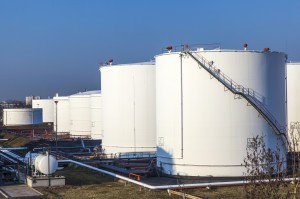 Natural gas rebounded on Friday following a sharp drop on Thursday as investors looked past a bearish inventory report by the Energy Information Administration and once again focused on forecasts for hot weather.
Natural gas rebounded on Friday following a sharp drop on Thursday as investors looked past a bearish inventory report by the Energy Information Administration and once again focused on forecasts for hot weather.
Natural gas for delivery in September traded 0.86% higher at $2.811 per million British thermal units at 07:57 GMT, shifting in a daily range of $2.820-$2.801. The contract tumbled 4.9% on Thursday, ending three days of gains, but was still up 0.4% for the week.
The Energy Information Administration reported on Thursday that US natural gas inventories rose by 65 billion cubic feet in the week ended August 7th, well above the median 55-bcf projection by analysts and the five-year average gain for the week of 48 bcf. Supplies rose by 79 bcf a year ago.
Total gas held in US storage hubs amounted to 2.977 trillion cubic feet, expanding a surplus over the five-year average of 2.896 trillion to 2.8% from 2.2% a week earlier, while supplies were also 21.2% above the year-ago stockpiles level of 2.456 trillion cubic feet.
However, bullish weather sentiment once again became the markets main driving force on Friday, helping prices recover. A cooler weather system with showers and thunderstorms that had been recently moving through the eastern US will exit off the Atlantic Coast today, NatGasWeather.com said, allowing for hot high pressure over the south-central US to expand across the rest of the East this weekend, beefing temperatures up. The Southwest will become quite hot going into next week, including much of California, while the northern Rockies are affected by cooler systems.
Next Thursdays inventory report will likely show a similar or slightly higher gain compared to yesterdays number due to continued cooler conditions across the North this week, but very strong cooling demand over the southern half of the US will keep the build not far from the average. The five-year average increase for the week ended August 14th is 54 bcf, while supplies rose by 86 bcf a year earlier.
It will be of utmost importance for investors to see for how long hot high pressure will remain established over the East, with very warm conditions currently expected to last at least through late next week. Meanwhile, the South will remain engulfed by highs in the mid 90s going in the fourth week of August and the southern Great Lakes and Mid-Atlantic regions will become quite warm as well, while comfortable near-normal weather will establish over the northern Rockies and interior West.
“With a fairly impressive summer ridge over the southern and eastern US next week and beyond, cooling demand will be a bit stronger than normal, which we expect will keep weekly builds near 5-year averages,” NatGasWeather.com said in a Thursday mid-day update. “As long as the hot dome of US high pressure holds strong, we expect weather sentiment will be viewed as somewhat bullish.”
Temperatures
According to AccuWeather.com, the high in New York will today will be 87 degrees Fahrenheit, 4 above usual, before jumping to 90-92 degrees the following four days. Chicago will peak at 87-90 degrees through August 17th, above the usual 82, followed by a drop to seasonal or slightly lower through the end of the month.
Down South, highs in Houston have begun their descent from the triple digits and will peak at 99 degrees today, 6 above usual, before gradually dropping to the low-mid 90s for the rest of the month. To the West, Sacramento will be very uncomfortable as temperatures max out at 99-102 degrees on August 15-16th and highs will remain in the low-mid 90s through most of the remainder of the month.
Pivot points
According to Binary Tribune’s daily analysis, September natural gas futures’ central pivot point stands at $2.834. In case the contract penetrates the first resistance level at $2.884 per million British thermal units, it will encounter next resistance at $2.981. If breached, upside movement may attempt to advance to $3.031 per mBtu.
If the energy source drops below its S1 level at $2.737 per mBtu, it will next see support at $2.687. In case the second key support zone is breached, the power-station fuel’s downward movement may extend to $2.590 per mBtu.
In weekly terms, the central pivot point is at $2.789. The three key resistance levels are as follows: R1 – $2.872, R2 – $2.945, R3 – $3.028. The three key support levels are: S1 – $2.716, S2 – $2.633, S3 – $2.560.





